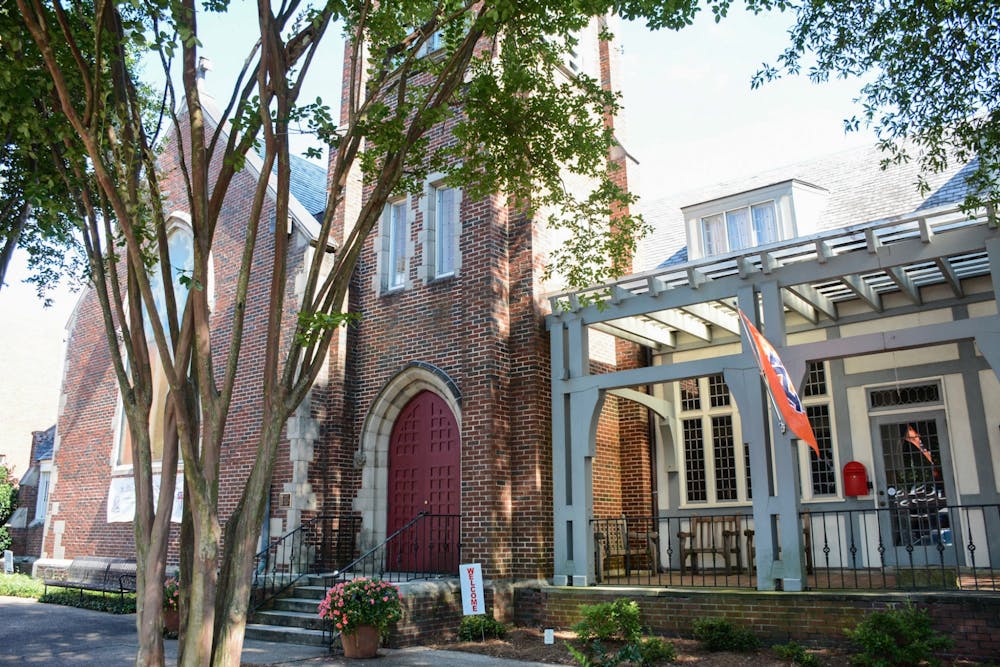Tucked among several businesses on East Magnolia in downtown Auburn sits a storied church with a unique architecture. St. Dunstan’s has served the Episcopal community of Auburn since 1957 and stands apart from many local institutions.
Lan Lipscomb, a parishioner of the church, spoke on the history of the church and Episcopalians in Auburn.
“There have been four Episcopal church buildings," Lipscomb said. "The first one was on campus where Mary Martin Hall is now. It lasted from 1851 to 1876. It finally collapsed as a result of the effects of the Civil War and loss of the University. They reconstituted themselves in 1887 at the present location of St. Dunstan’s."
Following this reestablishment, Auburn's Episcopal community formed a congregation around a small church named Holy Innocents. Notable Auburn figures such as Sheldon Toomer and Frederic Biggin attended the church, but it proved to lack enough space and facilities for the parish.
Lipscomb described Holy Innocents as only a Gothic church on the cheek, considering the church was made of wood instead of stone. Holy Innocents lasted from 1887 to 1925. The wooden church served the Episcopal community for decades, but as the University grew, leaders of the parish recognized the need for expansion.
“When [Holy Innocents] was torn down and rebuilt as this handsome, neo-Gothic structure in 1925, it was also called Holy Innocents," Lipscomb said. "It stayed that way until 1957 when the diocese bribed the parish to buy some land and build down on Gay Street, the fourth church, Holy Trinity.”
The architecture of St. Dunstan’s combines both neo-Gothic and Tudor revival styles. This is in stark contrast to many of the antebellum, columned churches around the South.
“Gothic revival [is] meant to resemble smaller parish churches in England, the home of Anglicanism," Lipscomb said. "The McDowell room and upstairs rooms are Tudor revival. Gothic is Norman architecture from the 11th and 12th century while Tudor [is from the] 15th, 16th and 17th centuries. The two work together well because they work well in England.”
Lipscomb studied in North Carolina and became very familiar with the Gothic architecture prevalent throughout Duke University's campus. He believes the emotions of the church suit it well.
“The church believes that the building itself should be a source of meditation and inspiration," Lipscomb said. "A lot of churches, including Episcopal churches before the mid-19th century, were kind of uninspired neo-classical, kind of like Greek and Roman temples. The Gothic is decorative and as much of it is aesthetics, a lot is just purposeful.”
The Rev. Thomas Joyner, rector of St. Dunstan’s, has served as leader of the parish since August 2020. He came to St. Dunstan’s after serving at the University of Alabama at Birmingham. The church often hosts various social events.
“[We have] weddings, funerals [and] holy Eucharist," Joyner said. "It’s our main service of readings, prayers, and communion that happens every Sunday at 10 [a.m.]. For the summer, every Thursday in June from 5:30 to 7 [p.m.], we have a group of local musicians who will play a concert on the porch for the public."
With various social events, church activities and Rev. Joyner at the pulpit, St. Dunstan’s is always open to the Auburn community.
“Whenever the doors are open, you’ll find people wandering because they want to look at the church," Joyner said. "They see it’s pretty or just need a moment to collect themselves or say a prayer. There are lots of opportunities for anyone to join our services and if ever in need of quiet or a chance to chat, that’s why we’re here.”
Do you like this story? The Plainsman doesn't accept money from tuition or student fees, and we don't charge a subscription fee. But you can donate to support The Plainsman.





